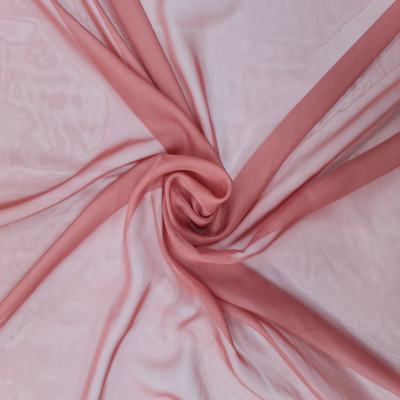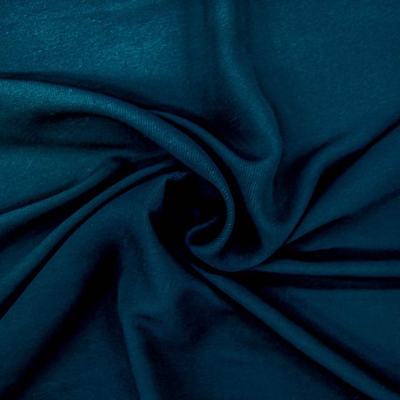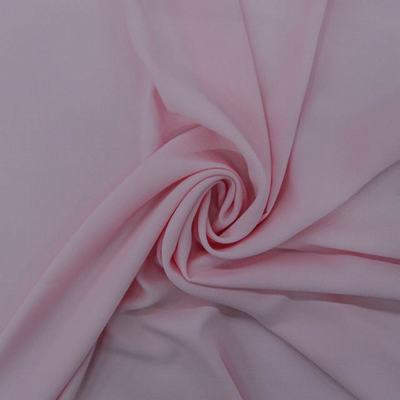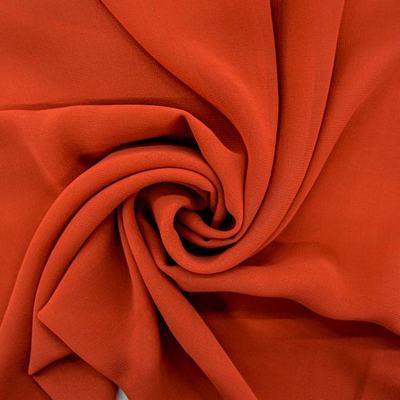PLAIN CHIFFON
PLAIN CHIFFON
Chiffon Fabrics: Get To Know Your Textiles Series
What Is Chiffon Fabric?
Chiffon refers to a range of different materials rather than a specific one. These types of fabrics share very similar characteristics. They are light weight and semi-transparent. They also have a thin silky texture and are formed by very basic weaving methods.
In the old days Chiffon used to be made entirely out of silk. It was quite expensive and was considered a high value item among the upper classes both in the US as well as in Europe. Chiffon is a French term which literally means cloth, even though today it represents a more meaningful description of one of the most luxurious fabrics out there.
Chiffon production eventually spread further than France when Industry developed around the west. The United States soon became one of the most prolific producers of silk based chiffon. They were already considering other materials to take the place of silk while still maintaining the quality and special weaving style Chiffon had become famous for.
In the late 1930’s Nylon became prevalent which was an exciting time for textile manufacturers who were eager to try out the new wonder fabric. So obviously nylon was tried in the production of Chiffon but they quickly realised it was not a suitable replacement for silk.
Then in 1958, the invention of polyester finally gave them the alternative they were looking for. This trend has remained in vogue since then, and the majority of Chiffon fabrics today are still produced using varying amounts of polyester thread. The only exception being that polyester is still unable to perfectly match the smooth feel of real organic silk.
In addition to polyester which makes up the most of Chiffons you will find today, Rayon is yet another fabric which has been successfully implemented in the production of Chiffon styled materials. Cotton has been briefly experimented with in making Chiffon but has proven vulnerable to wear and tear when compared to other stronger synthetic materials.
To a certain extent some Chiffon fabrics are still made from silk and can be considered the absolute highest standard of the material both in terms of price and quality. These are reserved for ultra-luxury garments and exclusive wear.
How Is Chiffon Fabric Made?
Chiffon has more to do with the particular style of weaving employed rather than the fabric ingredients used to make it. Chiffon is well known for the distinctive weaving method which combines an ‘S’ shape twist initially and is then finalised by a ‘Z’ shaped twist. This gives Chiffon its unique stretchy ability while at the same time makes it feel highly textured and almost coarse to the touch.
Chiffon fabric is made using an extremely intricate process. This is regardless of the base material being used. Many Chiffon variants are in fact still made by hand, which impacts the price significantly due to the increased time consumption and attention to detail involved.
Other types of chiffon are made using machines but they are still based on special care and slower manufacturing procedures than other synthetic fabrics.
The base material used in making Chiffon styled fabrics will also have an influence on the overall production and output from any given manufacturer.
So for instance, when silk is used to make Chiffon, you have to take the entire process of silk production into account. This means everything from the breeding of silk worms, all the way to the extracting of silk threads from the silkworm cocoons, and finally combining them to form a continuous thread.
Polyester is much more efficient to produce since it requires hardly any organic ingredients. Faster delivery is synonymous with most synthetic materials like polyester.
Chiffon material is very cumbersome to work with since it is very slippery. This makes sewing it a rather detailed affair. Tailors and dressmakers know all too well about the delicate requirements when working with Chiffon. Usually it is necessary to use patterns made of paper to make sure the sewing can be done accurately. Only when the garment is complete are the patterns removed to ensure a high quality finish.
Where Is Chiffon Fabric Produced?
This will also depend heavily on the main ingredients used to make the particular style of Chiffon fabric you are looking for.
So as we have established many different materials have been used in the common production of Chiffon. China is known to be the largest producer of finished Chiffon materials. However many times the fibres used by them is brought in from other countries.
But in the case of silk, China has been producing it for nearly 5000 years. So they are hardly dependent on other nations for producing the highest standards of silk based Chiffon fabrics. Textile manufacturers in the Indian subcontinent also have a long history in producing silk fibre but still send their silk to China for final processing.
Countries like India and Pakistan also make their own Chiffon fabrics for export and the best in fine quality silk Chiffon is held in high esteem by many western nations.
Most of the synthetic forms of Chiffon still comes from China since they are the world’s leading producer of polyester, rayon and nylon.
How Is Chiffon Fabric Used?
Chiffon based garments are typically worn exclusively by women and are mainly used for special dresses, nightwear and evening gowns. You will hardly find garments used for daily wear made out of Chiffon fabric.
Due to Chiffon being semi-transparent it is often layered against other more opaque materials to create a particular textured style or delicate fashion statement.
Chiffon is also used to make a wide variety of haberdashery accessories such as ribbons, bows and motifs. Women’s blouses and dresses are also made from Chiffon.
The silk revolution that made Chiffon famous in the first place was not limited to France. Countries in Africa have also been making Chiffon-styled garments for several hundreds of years. For instance Ethiopia is well known for silk based clothing such as long fashion gowns which are brightly coloured and exactly textured like most other Chiffon dresses.
In countries like India Chiffon is still used to this day to make women’s Couture dresses and Sarees. In fact it is more common these days to find cultures using Chiffon based garments outside of the western hemisphere where Chiffon used to be regarded as a prestigious luxury.







